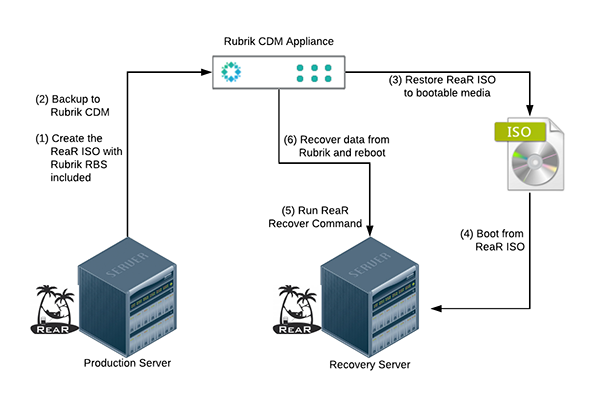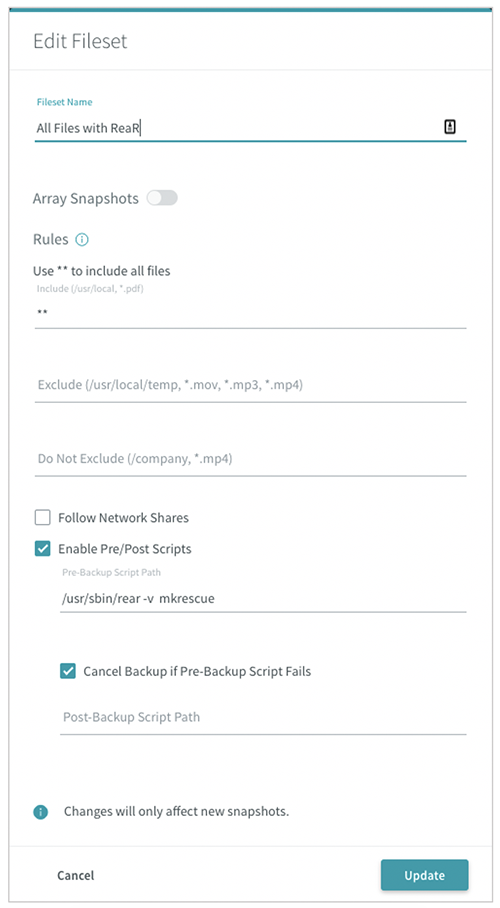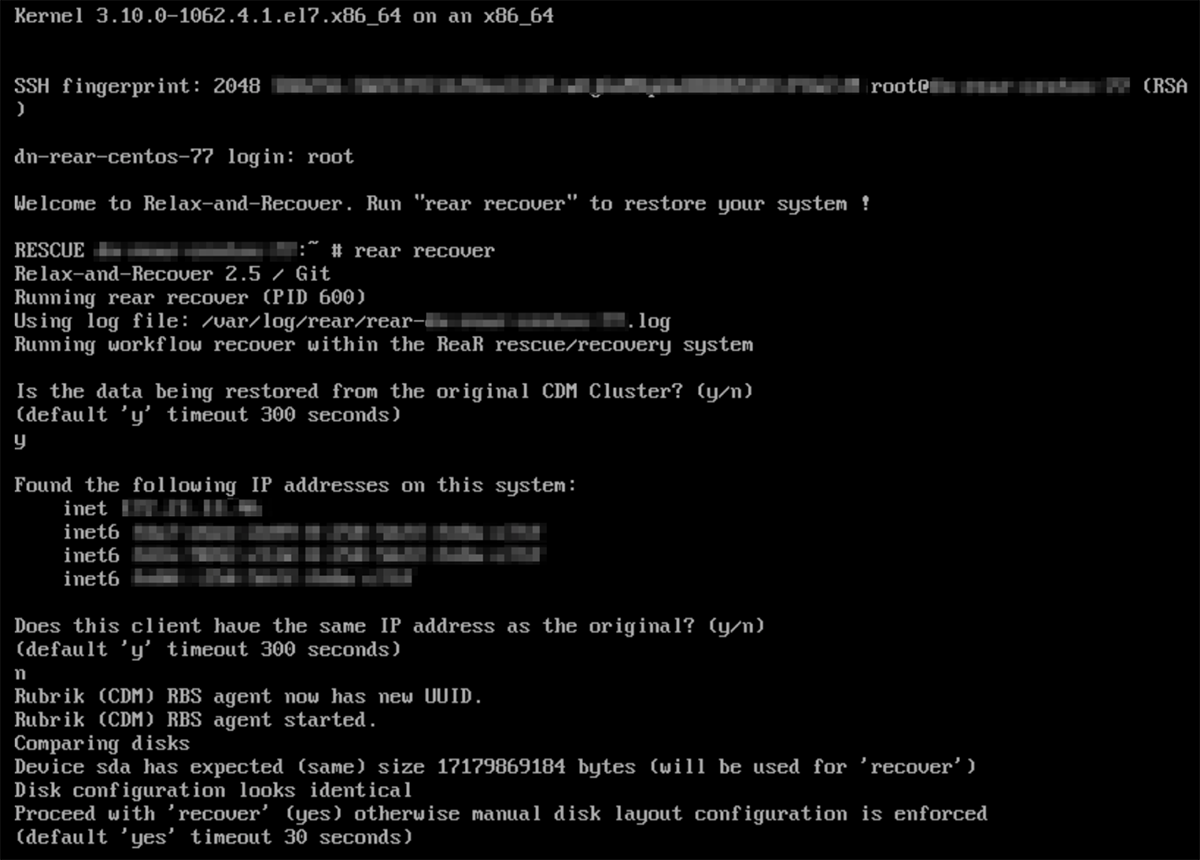For many customers, Bare Metal Recovery (BMR) of Linux systems is a common use case for operations like disaster recovery and cloning since it allows a system to be completely restored from hardware with no operating system installed. With virtual machines (VMs), bare metal restores are easily accomplished by taking an image backup and restoring that image. However, for some systems, this is not possible. These include restoring to physical machines, VMs on hypervisors that do not support image-level backups, and cloud-based machines that need to be moved between clouds or back on-prem. BMR also avoids problems during recovery of finding the right operating system, patches, drivers, sizing and repartitioning disks.

To address these limitations, Rubrik contributed to the open source project Relax and Recover (ReaR), a Linux bare metal recovery tool that can create a bootable ISO image from a Linux system. The integration with Rubrik CDM consists of including its RBS agent in the ISO image (step 1). The system being protected is backed up by Rubrik (step2). To restore, the recovery system is booted from the ReaR ISO image (steps 3 & 4). Rubrik CDM can be used to recover all or part of the Linux system (steps 5 & 6). After rebooting the recovery system, it will be restored to its original state.

During backup, Rubrik CDM can automatically generate new ISO images and save them with the rest of the filesystem data. During recovery, the user interacts with the ReaR environment to boot the recovery system and select the source and target for recovery. Once the recovery system is configured by ReaR, the data for the recovery system is manually restored from Rubrik CDM.

The ability to perform bare metal recovery of Linux systems gives Rubrik users more flexibility in their disaster recovery plans. By automating bare metal recovery with ReaR, Rubrik makes-large scale DR possible with fewer operators.
Links to Rubrik’s integration with ReaR can be found on the Rubrik Community Project Build site here.
